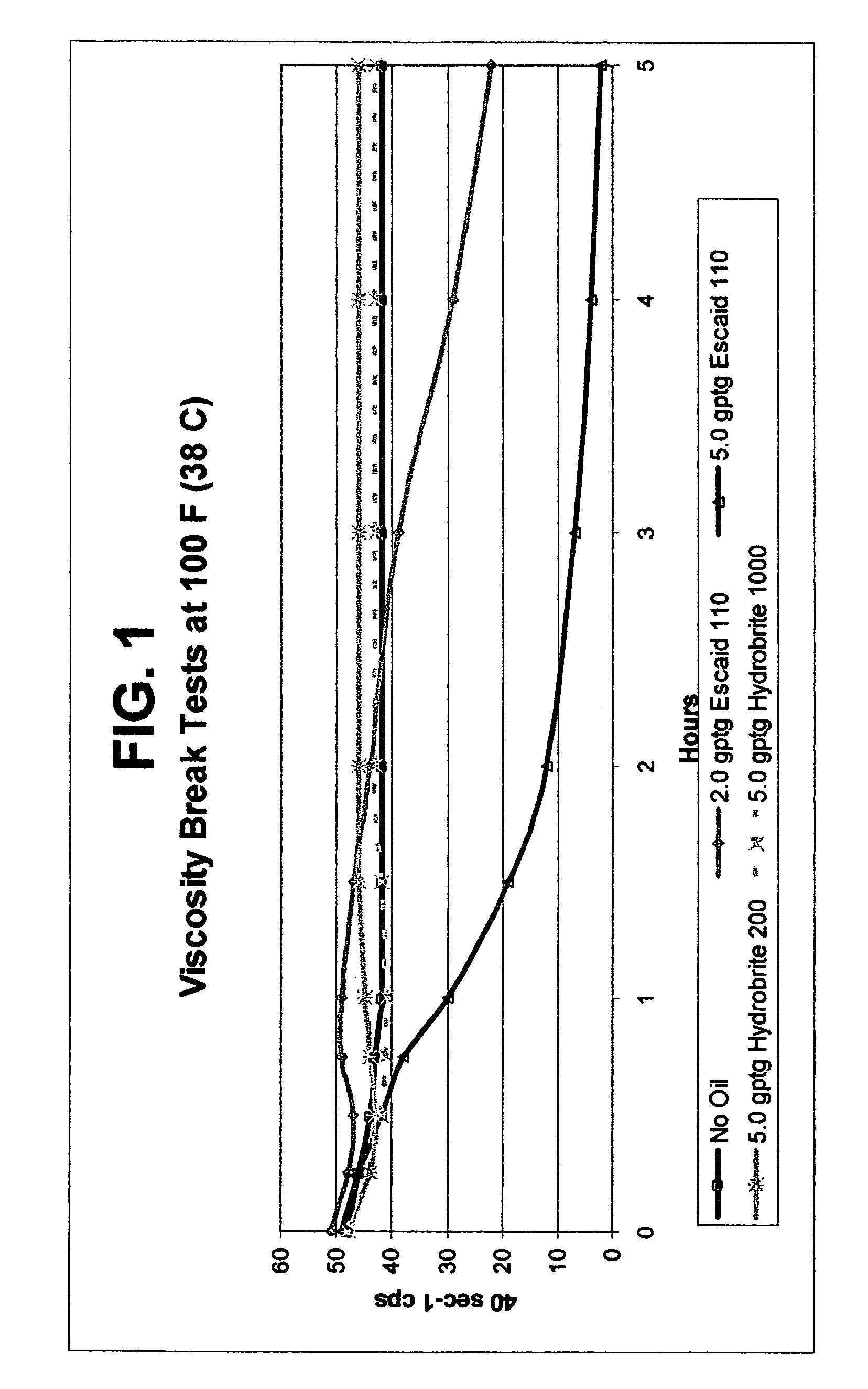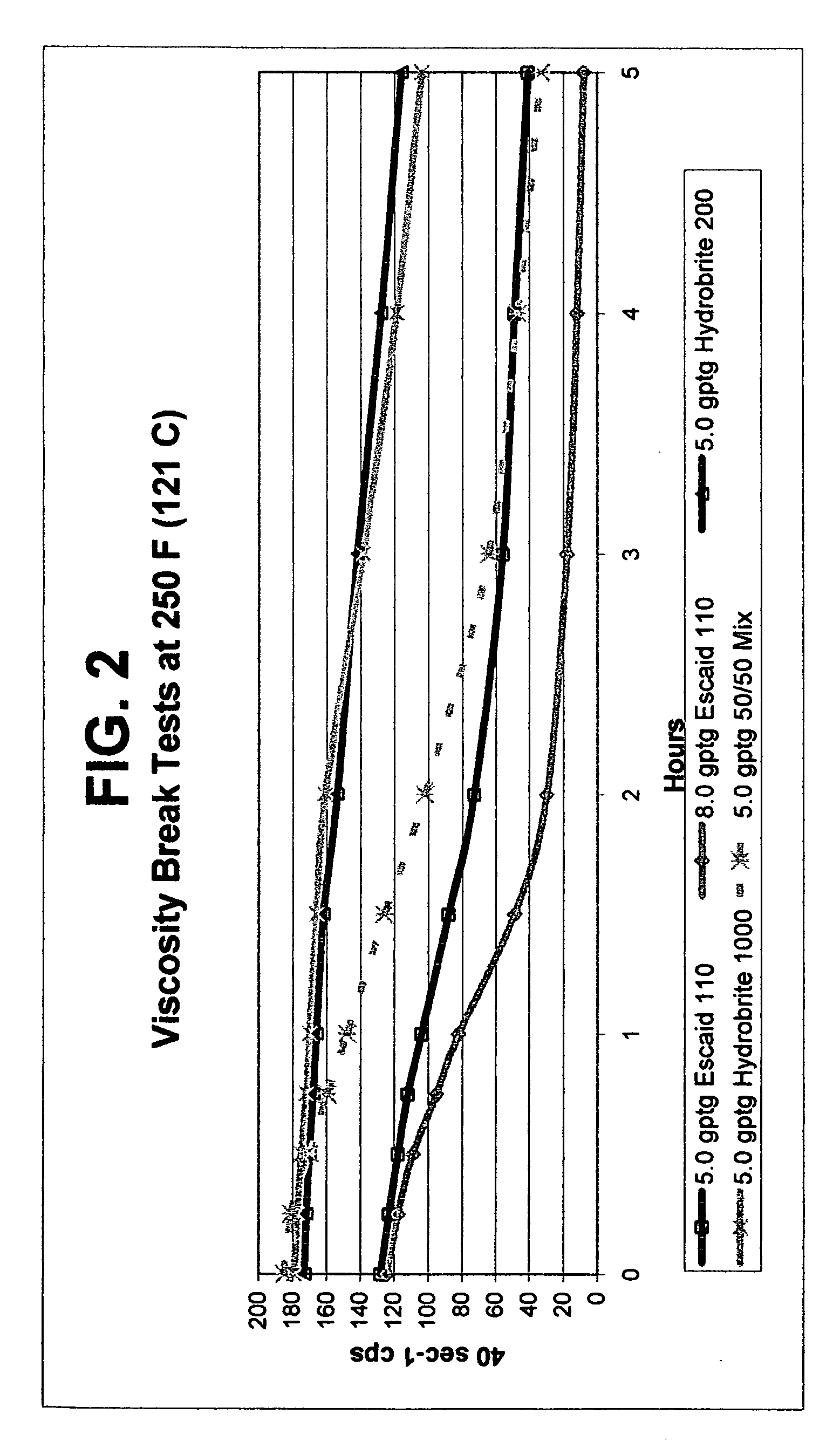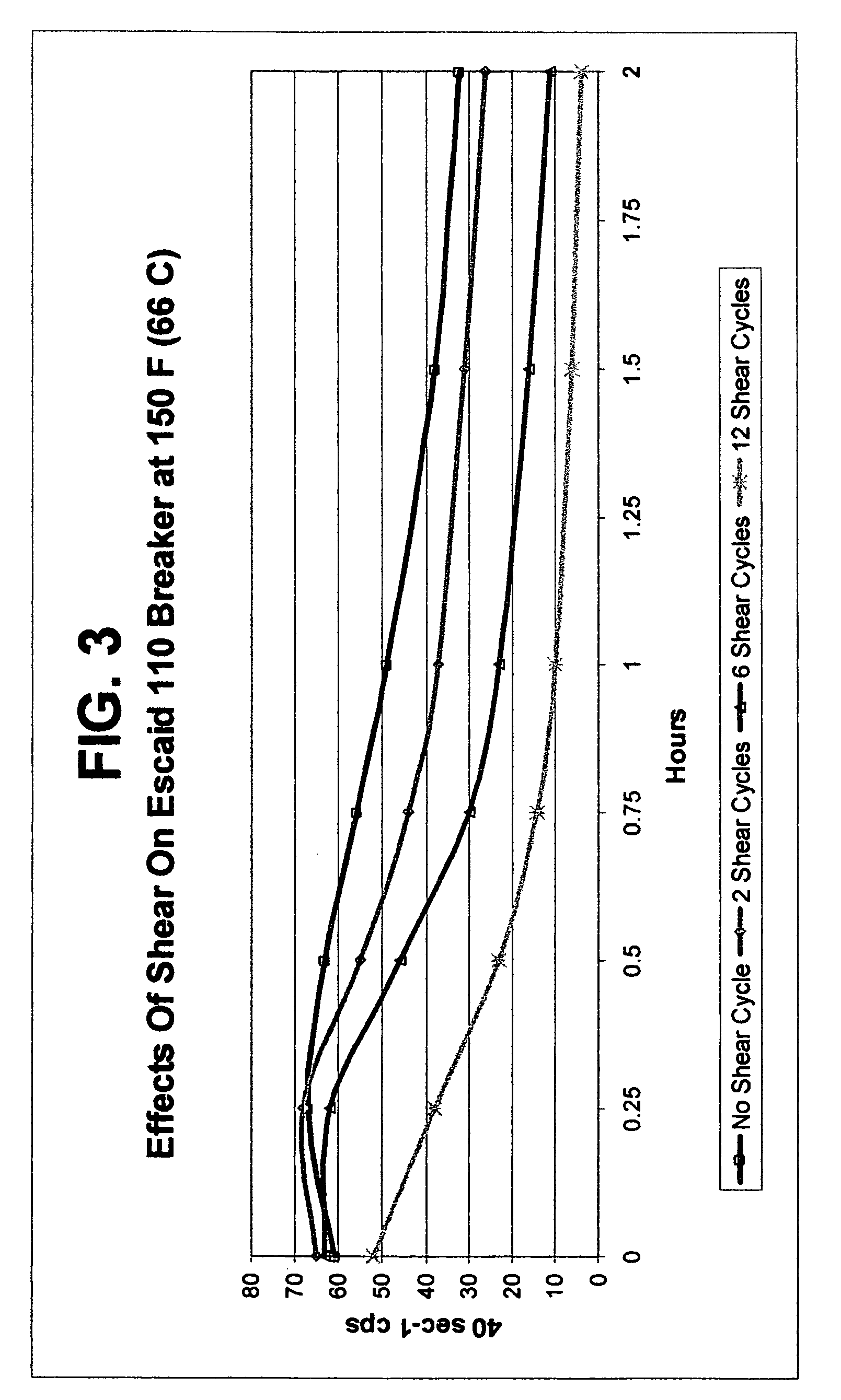Use of mineral oils, hydrogenated polyalphaolefin oils and saturated fatty acids for breaking ves-gelled fluids
a technology of gelled fluid and mineral oil, applied in the direction of fluid removal, insulation, borehole/well accessories, etc., can solve the problems of fluid deformation, complex development of suitable fracturing fluid, cracking or fractures cannot close or heal completely, etc., to reduce the viscosity of gelled aqueous fluid, controllable breakage, effect of reducing the viscosity
- Summary
- Abstract
- Description
- Claims
- Application Information
AI Technical Summary
Benefits of technology
Problems solved by technology
Method used
Image
Examples
example 1
[0051] Shown in FIG. 1 are the results of using three mineral oils, Escaid® 110, Hydrobrite®200 and Hydrobrite®1000 at different concentrations within WG-3L viscoelastic surfactant gelled fluid at 100° C. (38° C.). Surprisingly and unexpectedly complete VES viscosity reduction was observed with addition of a small amount of these oils over a 5 hour period using 5.0 gptg Escaid® 110. Viscosity reduction over a 5 hour period was achieved using 2.0 gptg Escaid® 110. Little reduction was seen in this Example for the more viscous Hydrobrite® 200 and 1000 oils. This appears to indicate that the viscosity of the mineral oil plays a major role in the rate of the viscosity break of a VES-gelled fluid.
[0052] The results show an easy, efficient, and highly cost effective method for breaking VES gel viscosity.
example 2
[0053] Results showing the effect of using the mineral oils of Example 1 within WG-3L gelled fluid at 250° F. (121° C.), a much higher temperature, are presented in FIG. 2. Here the base fluid contained 10.0 ppg CaCl2 (1.2 kg / liter) brine rather than the KCl brine, and VES-STA 1 was used at 2 pptg (0.2 kg / m3); VES-STA 1 is a VES gel stability additive available from Baker Oil Tools. The results shown in FIG. 2 shows how even the much thinner, lower viscosity Escaid® 110 mineral oil did not break the gel of the VES fluid upon contact or immediately once heated to 250° F. (121° C.), but rather lowered initial viscosity, with controlled viscosity reduction over time. Additionally, the 50 / 50 blend of Escaid® 110 / Hydrobrit® 200 gave typical VES fluid viscosity upon heat-up with then a very controlled viscosity reduction over time and was comparable to the 5.0 gptg Escaid® test fluid after 4 to 5 hours.
example 3
[0054]FIG. 3 shows the effects of shear on a VES fluid containing 0.5 vol % Escaid® 110. A field scale paddle tank batch mixer with centrifugal pump was used for the tests. The fluid temperature during the test was 83° F. (28° C.). The centrifugal pump circulated the fluid from the bottom to the top of the batch mixer tank at 3.0 bpm. Samples of the fluid were taken at 0, 2, 6 and 12 cycle volumes of VES-gelled fluid through the centrifugal pump and put on Grace and Brookfield pressurized rheometers for viscosity break testing at 150° F. (66° C.). Data was collected once the fluids reached 150° F. (66° C.); approximately 16 minute heat-up time. It may be seen from FIG. 3 that the viscosity of the fluid decreased only gradually with increasing number of shear cycles, and thus fluids containing mineral oils as internal breakers are sufficiently shear stable to accomplish the purpose of the fluid (e.g. fracturing a formation) before viscosity is reduced.
[0055] As can be seen, the meth...
PUM
 Login to View More
Login to View More Abstract
Description
Claims
Application Information
 Login to View More
Login to View More - R&D
- Intellectual Property
- Life Sciences
- Materials
- Tech Scout
- Unparalleled Data Quality
- Higher Quality Content
- 60% Fewer Hallucinations
Browse by: Latest US Patents, China's latest patents, Technical Efficacy Thesaurus, Application Domain, Technology Topic, Popular Technical Reports.
© 2025 PatSnap. All rights reserved.Legal|Privacy policy|Modern Slavery Act Transparency Statement|Sitemap|About US| Contact US: help@patsnap.com



